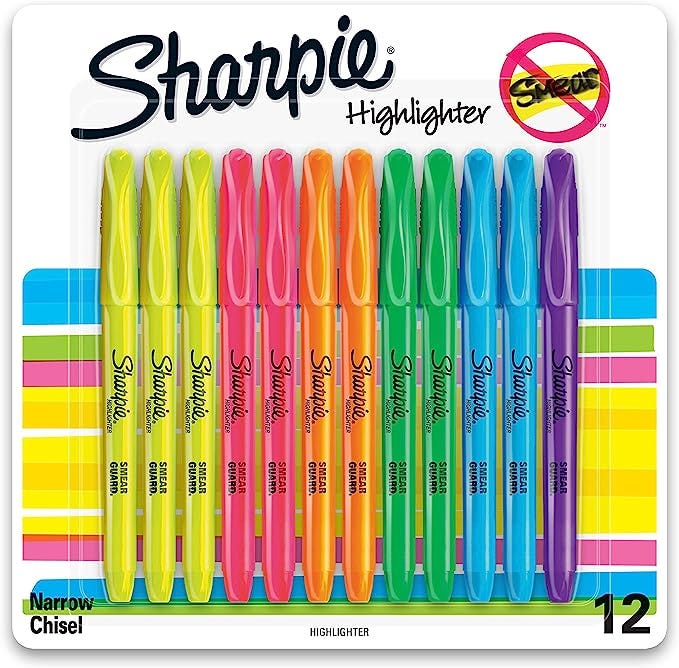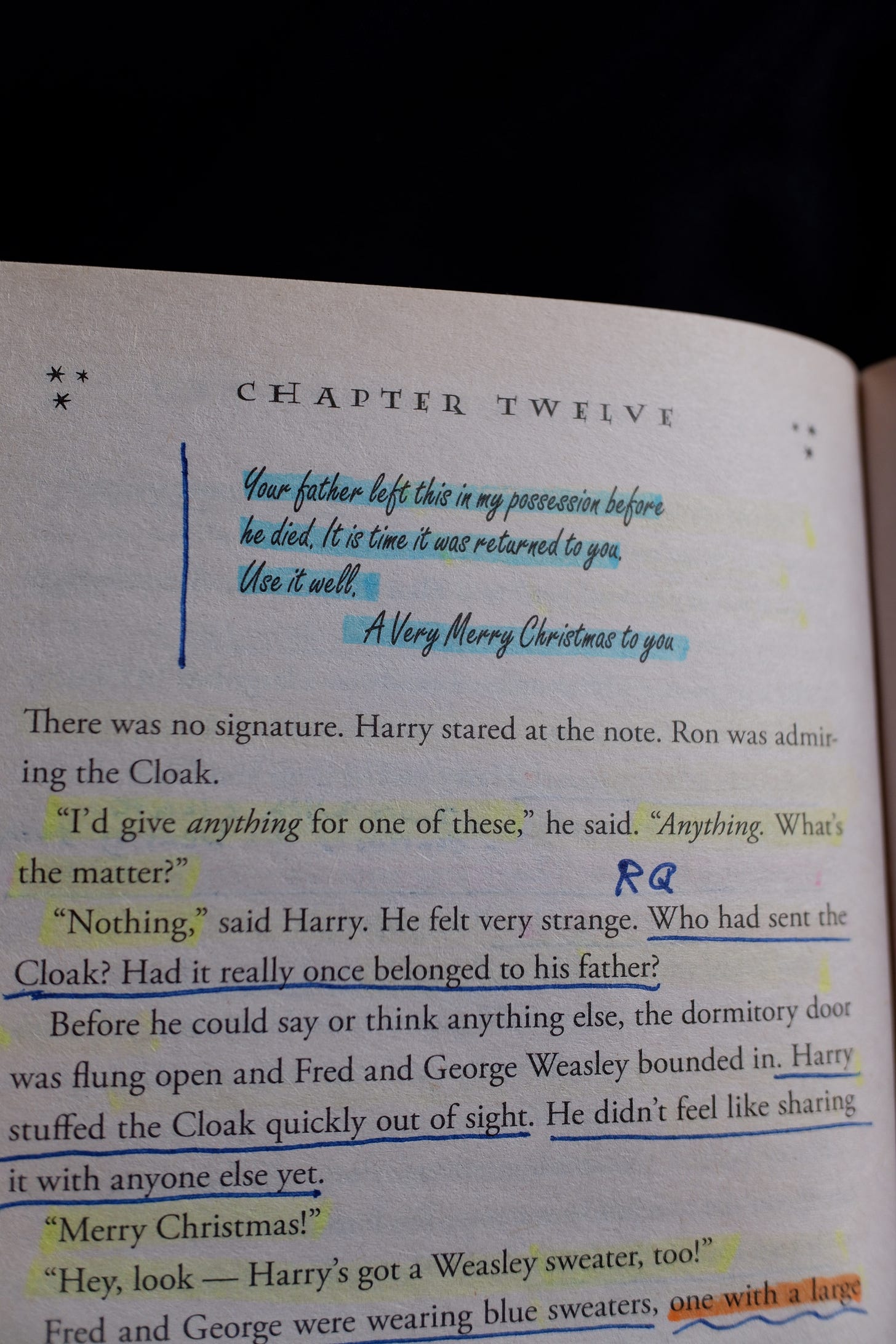Annotating a novel can be a transformative experience for any writer.
It allows you to delve deeper into the intricacies of the story, characters, and writing style of a book.
By using a well-organized system of highlighter colors, you can bring the pages to life, making key information stand out and enabling a more immersive reading experience.
In this guide, we will explore the art of annotating a novel and the specific highlighter colors that can elevate your understanding and appreciation of the text.
I developed this highlighting system during my 50+ hour analysis of Harry Potter and the Sorcerer’s Stone.
My highlights are so thorough that I’m able to flip back through the pages and gain tremendous insight into J.K. Rowling’s writing style 👇
I’ve since used the highlighting system on a number of books, including The Secret History by Donna Tartt and The Great Gatsby by F. Scott Fitzgerald.
The value of having a collection of books with key information revealed through highlights cannot be overstated.
You can use any type of highlighter, but I use this pack from Sharpie:
Here’s the breakdown…
1. Orange: Interesting Grammar/Structure/Vocabulary
Mark instances of intriguing grammar, unique sentence structures, or noteworthy vocabulary choices.
When you encounter sentences that flow exceptionally well or contain striking language, let the orange highlighter draw your attention to these gems.
By doing so, you not only appreciate the author's craftsmanship but also gather inspiration for your own writing endeavors.
2. Green: Main Plot/Mystery
Chart the main plot and any intriguing mysteries that unfold throughout the novel.
As you mark key events, plot twists, and foreshadowing moments, you'll gain a better understanding of the story's trajectory and the elements that keep you engaged.
For mysteries, this is a great way to track subtle clues woven throughout the narrative.
3. Pink: Character & Object Descriptions
Character development and vivid object descriptions are integral to any great novel.
Employ the pink highlighter to accentuate passages that provide insights into a character's look.
Additionally, use pink to mark detailed descriptions of essential objects or symbolic elements that enrich the story.
4. Yellow: Notable Dialogue
Dialogue breathes life into characters, shaping their identities and relationships.
Use the yellow highlighter to emphasize memorable lines of dialogue that evoke emotions, reveal character dynamics, or contribute to the overall themes of the novel.
Noting these significant conversations will give you a deeper understanding of the characters and their interactions.
5. Blue: Inserts
Whenever you come across inserts such as letters, newspaper clippings, or diary entries within the novel, reach for the blue highlighter.
This color will help you distinguish these distinct elements from the main narrative, making it easier to revisit them later and discern their impact on the overall reading experience.
6. Purple: Location Descriptions
Immerse yourself in the setting of the novel by employing the purple highlighter to mark eloquent and immersive descriptions of locations.
Whether it's a bustling cityscape, a serene countryside, or a mysterious castle, purple will help you visualize and appreciate the author's ability to transport you to different worlds.
Extra: Use a Pen to Make Notes in the Margins
While highlighters bring attention to specific elements, a trusty pen is your ally for jotting down personalized insights and reflections directly in the margins of the novel.
I use Pilot, G2 pens:
Use a pen to scribble thoughts, questions, and connections you make as you navigate through the story.
Armed with a pen, you can:
Pose thought-provoking questions about character motives or plot developments.
Make connections between different parts of the story or link themes and symbols.
Record your emotional responses to key events or impactful passages.
Explore predictions and hypotheses about the unfolding plot or character arcs.
These marginal notes serve as a dialogue between you and the author, allowing you to engage deeply with the text and develop a more profound connection to the narrative.
Remember, annotating a novel is a personal endeavor, and there's no right or wrong way to do it.
Experiment with these highlighter colors to see what works best for you.
As you journey through the pages of a novel, your annotations will evolve into a meaningful record of your reading experience, serving as a valuable reference for future reflections and discussions.
Consider sharing this lesson with a friend to grow the C.S.M. Fiction community:
Or explore the C.S.M. Fiction archive.






